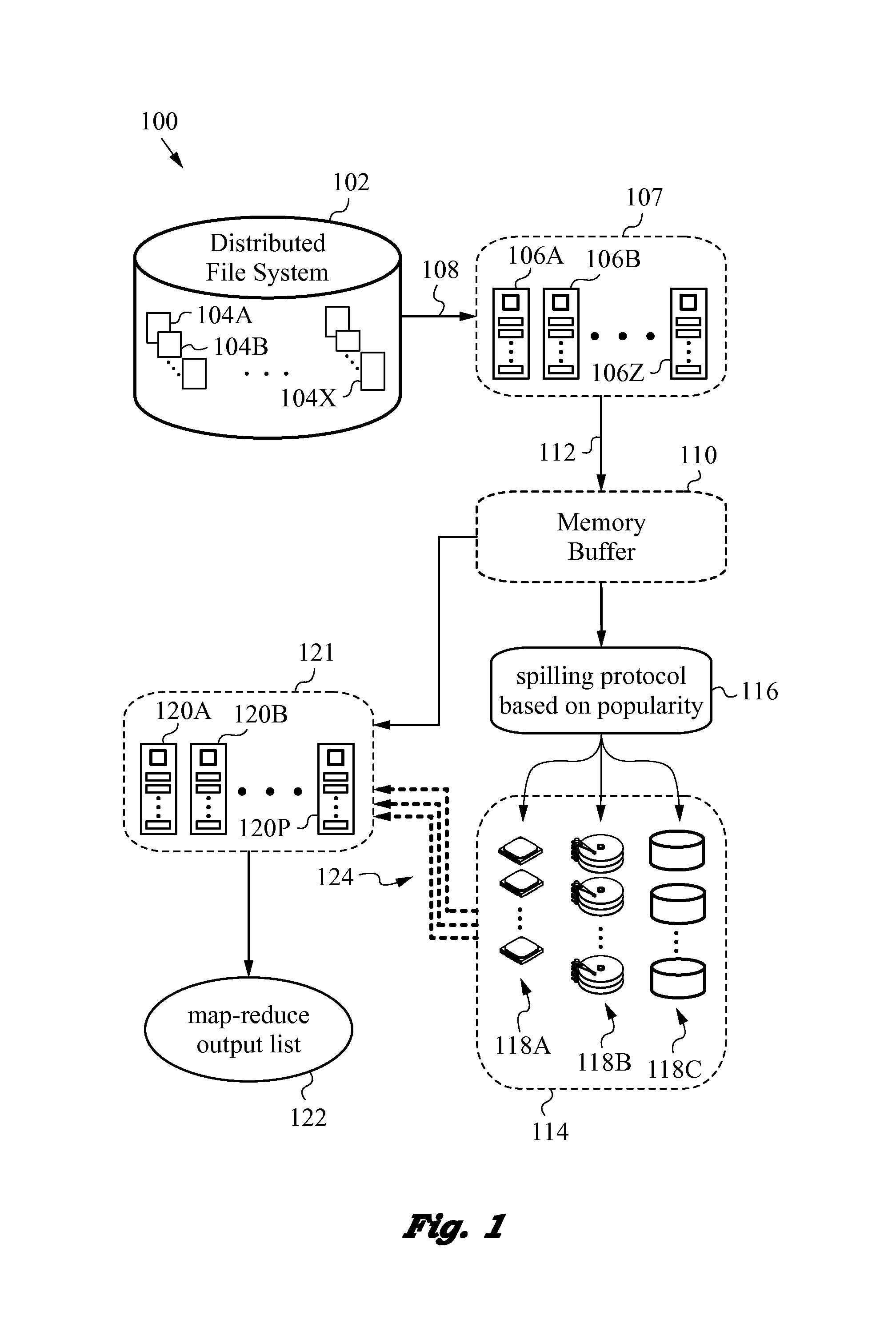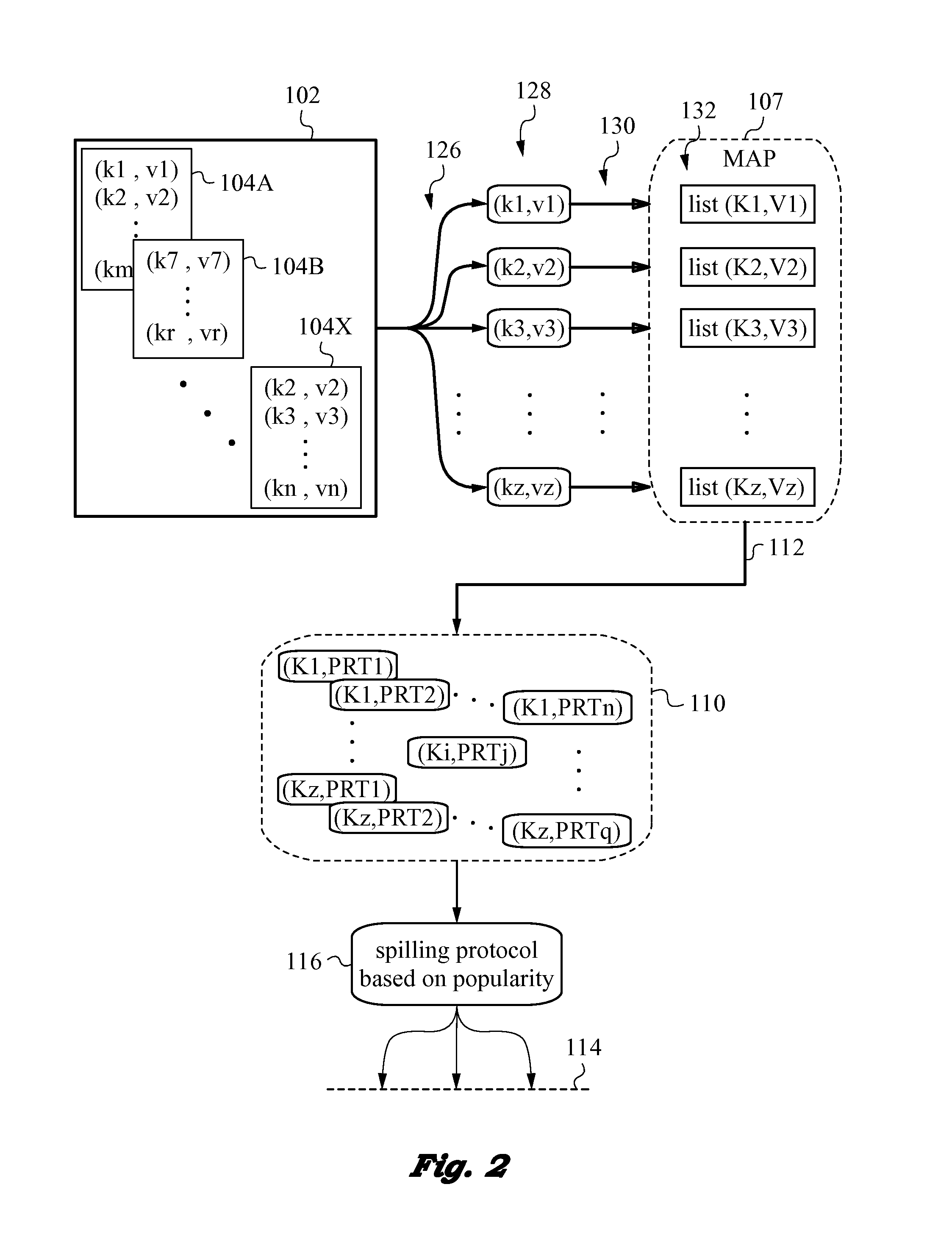Management of Intermediate Data Spills during the Shuffle Phase of a Map-Reduce Job
a technology of map-reduce job and data spill, applied in the field of distributed computers, can solve the problems of presenting speed-ups of just a few percent, shuffle phase often stresses the bandwidth, and perform computationally intensive operations, and achieve the effect of reducing traffic load
- Summary
- Abstract
- Description
- Claims
- Application Information
AI Technical Summary
Benefits of technology
Problems solved by technology
Method used
Image
Examples
Embodiment Construction
[0029]The drawing figures and the following description relate to preferred embodiments of the present invention by way of illustration only. It should be noted that from the following discussion, alternative embodiments of the methods and systems disclosed herein will be readily recognized as viable options that may be employed without departing from the principles of the claimed invention. Likewise, the figures depict embodiments of the present invention for purposes of illustration only. One skilled in the art will readily recognize from the following description that alternative embodiments of the methods and systems illustrated herein may be employed without departing from the principles of the invention described herein.
[0030]The present invention will be best understood by initially referring to the high-level diagram of FIG. 1. This drawing figure illustrates a distributed computer system 100 configured for spill management in accordance with the invention. It is understood ...
PUM
 Login to View More
Login to View More Abstract
Description
Claims
Application Information
 Login to View More
Login to View More - R&D
- Intellectual Property
- Life Sciences
- Materials
- Tech Scout
- Unparalleled Data Quality
- Higher Quality Content
- 60% Fewer Hallucinations
Browse by: Latest US Patents, China's latest patents, Technical Efficacy Thesaurus, Application Domain, Technology Topic, Popular Technical Reports.
© 2025 PatSnap. All rights reserved.Legal|Privacy policy|Modern Slavery Act Transparency Statement|Sitemap|About US| Contact US: help@patsnap.com



